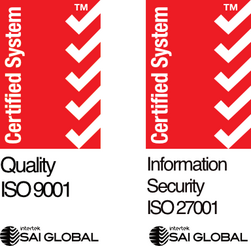
A Smart Australian Cyber Business
Emantra is an Australian Sovereign Cloud and Managed Cybersecurity Services Provider. Founded in 2005 by its current owner and CEO Ross Dewar, it retains an SME culture of care and attention.
Emantra has evolved from an enterprise hosting provider into a full-service cyber business, operating world-class cloud services trusted by government and critical infrastructure clients.

A Truly Sovereign Service Provider
With an expert team and industry-best certifications including ISO 27000, Emantra is proudly one of few Australian-owned companies listed on the Department of Home Affairs Hosting Certification Framework certified for "GovCloud" services. It applies these same government-grade principles to medium and enterprise sized companies within critical infrastructure supply chains.
Emantra proudly presents a fully sovereign service, with no foreign ownership, control, or influence; exclusive use of Australian facilities and jobs, and importantly, sole allegiance to Australian law and regulations. We satisfy all aspects of the Commonwealth Government's Foreign Ownership, Control and Influence (FOCI) definition and risk assessment.
Twenty years' experience
Our services are deliberately focused on three core areas where sovereignty, accreditation, and delivery maturity matter most: Sovereign Hosting, Managed Cyber Services, and PROTECTED Microsoft 365. Each service is designed to reduce time to assurance, simplify audit, and provide predictable, accountable outcomes.
We consult, design, build and operate our services from defence-grade Australian T3+ data centres. We own and control all compute and storage infrastructure within those data centres around Australia. We own our own interconnecting fibre network. Emantra is a truly independent operator.
Emantra is not just about infrastructure; you’re getting a trusted, defence-grade foundation for mission-critical operations, delivered by a team that understands the demands of government, defence, and regulated industries.

Sovereign Hosting for Government and Defence
Emantra delivers accredited sovereign hosting through its Australian-operated GovCloud, certified under the Hosting Certification Framework and assessed to support PROTECTED workloads. Our environments are designed for agencies and Defence suppliers that require verifiable data sovereignty, isolation, and compliance from day one.
This is not shared public cloud infrastructure. Each client receives dedicated, tenant-level environments with full sovereign administration, aligned to the ISM, PSPF, and DISP expectations.
Clients benefit from faster time to assurance, simplified accreditation pathways, and a hosting environment that is auditable, controlled, and operated entirely within Australia. All services are delivered by cleared Australian staff, with no offshore access or administration.

Managed Cyber Services Built for Assurance
Emantra provides sovereign managed cyber services designed to deliver continuous protection and compliance without the burden of running internal security operations. Our services are aligned to the ISM, Essential Eight, and PSPF, and are delivered within Australian-operated infrastructure by cleared personnel.
Rather than generic SOC services, we focus on assurance-driven cyber operations. This includes configuration hardening, vulnerability and patch management, monitoring and alerting, sovereign backup and recovery, and evidence-led reporting mapped directly to Government control frameworks.
Clients gain predictable cyber maturity uplift, reduced administrative overhead, and confidence that their environments remain compliant, monitored, and auditable at all times.

PROTECTED M365 Environments Hosted and Managed in Australia
Emantra designs, deploys, and manages Microsoft 365 and Azure environments hardened to ASD and ISM blueprints for PROTECTED workloads. This enables secure collaboration while maintaining full sovereignty over access, administration, and data handling.
Our PROTECTED M365 environments implement multi-factor authentication, conditional access, privileged access management, data loss prevention, audit logging, and retention controls aligned to Government requirements. Where required, Microsoft environments can be integrated directly with Emantra’s sovereign hosting platform to support sensitive workloads.
Clients benefit from faster deployment, reduced accreditation effort, and a hardened collaboration platform that meets PROTECTED requirements without compromise.